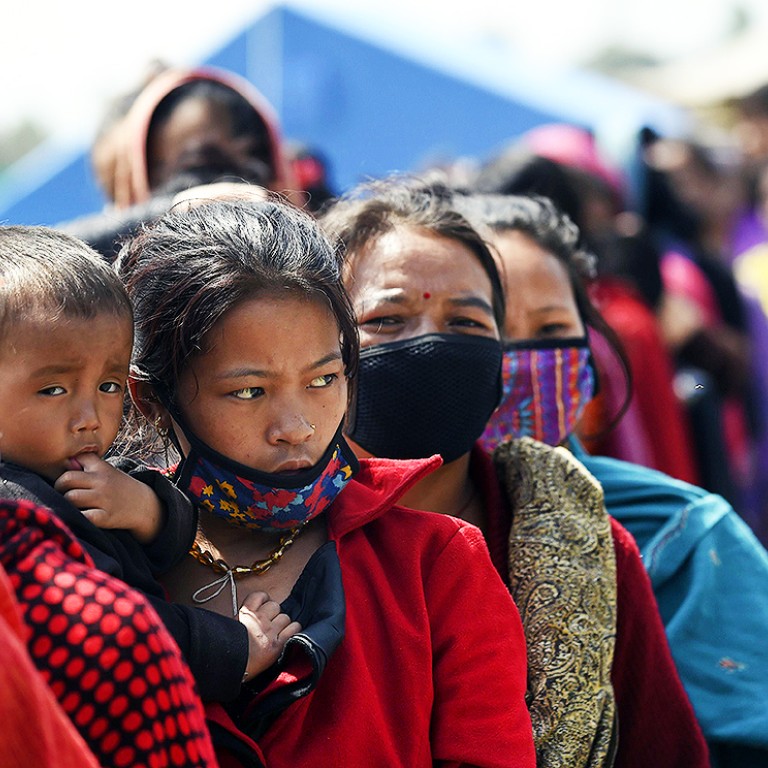
Stench of death spreads through Kathmandu as Nepal quake death toll climbs to 6,200
The death toll from Nepal’s devastating earthquake rose steadily past 6,200 today as fresh aftershocks and the stench of rotting bodies made it hard for nervous survivors to return to their homes.
The death toll from Nepal’s devastating earthquake rose steadily past 6,200 today as fresh aftershocks and the stench of rotting bodies made it hard for nervous survivors to return to their homes.
Disposal of the hundreds of bodies still being found six days after the 7.8 magnitude quake devastated the Himalayan nation of 28 million people was becoming a problem for officials, who have ordered immediate cremations.
“Morgues are full beyond capacity and we have been given instruction to incinerate bodies immediately after they are pulled out,” said Raman Lal, an Indian paramilitary force official working in coordination with Nepali forces.
Aid was slowly beginning to reach remote towns and villages nestled in the mountains and foothills but the overpowering smell of bodies trapped beneath the rubble of collapsed buildings in the capital was making it hard for residents to return to their homes.
But life was slowly edging back toward normal in the capital Kathmandu today as residents packed up tents and moved indoors, farmers delivered fresh produce and lines disappeared at petrol stations. Fresh croissants even emerged from a popular bakery and were quickly snapped up.
Many Nepalis have been sleeping in the open since Saturday’s quake. According to the United Nations, 600,000 houses have been destroyed or damaged.
WATCH: CCTV footage of the moment when quake hit Nepal
Finance Minister Ram Sharan Mahat said Nepal would need at least US$2 billion to rebuild homes, hospitals, government offices and historic buildings and appealed for help from international donors.
“This is just an initial estimate and it will take time to assess the extent of damage and calculate the cost of rebuilding,” Mahat said.
The United Nations has said eight million people had been affected, with at least two million in need of tents, water, food and medicines over the next three months.
A home ministry official said the death toll had risen to 6,204, with 13,924 injured.
Information Minister Minendra Rijal said the government would provide US$1,000 in immediate assistance to the families of those killed, as well as US$400 for cremation or burial.
Prime Minister Sushil Koirala said earlier this week that the death toll from the quake could reach 10,000. That would surpass the 8,500 who died in a 1934 earthquake, the last disaster on this scale to hit the Himalayan nation sandwiched between India and China.
Officials have said the chances of finding any more survivors were fading, even though a boy and a woman had yesterday been pulled from the rubble where they had lain trapped for five days.
As rescuers slowly started reaching outlying areas, witnesses reported seeing 70 to 80 per cent of buildings severely damaged in Chautara, northeast of Kathmandu towards the border with China’s Tibet.
Experts are assessing why some buildings collapsed and others withstood the earthquake. Most buildings that collapsed were either hundreds-of-years-old heritage structures or recently built guesthouses, even as private residential buildings stood strong, bearing the tremors.
Construction experts said the government woke up to the need of spreading quake awareness among the residents just a decade ago by enacting building codes and other regulations. Unfortunately, they were not followed.
Anger over the pace of the rescue has flared in some areas, with Nepalis accusing the government of being too slow to distribute international aid that has flooded into the country.
It has yet to reach many in need, particularly in areas hard to reach given the quake damage, poor weather and aftershocks.
READ MORE: Second survivor pulled alive from Kathmandu quake rubble after five days
Tensions between foreigners and Nepalis desperate to be evacuated have also surfaced. In Ashrang village in Gorkha, one of the worst-hit districts about four hours by road west of Kathmandu, hundreds of villagers were living outdoors with little food and water even as boxes of biscuits, juice and sacks of rice and wheat were stored in a nearby government office.
In the past 48 hours, Unicef has delivered nearly 30 metric tonnes of supplies, including tents, water purification tablets, and first aid and hygiene kits.
Nepal is also appealing to foreign governments for more helicopters help the 20 at work in rescue operations. China was expected to send more, home ministry official Dhakal said.
A group of Nepal’s Gurkhas serving the British army have rushed back home to help their quake-hit countrymen get some clean drinking water. The soldiers from the Queen’s Gurkha Engineers Unit yesterday set up a portable water purification unit on the Kathmandu grounds of the old royal palace.
“I am just glad I could serve my countrymen when they really needed something so necessary like clean drinking water,” said Corporal Bhesh Gurung, 34. “I have been away for 13 years serving in a foreign land and finally I can do something for my motherland.”

